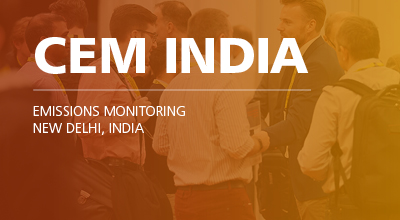India introduces new Guidelines for pollution monitoring systems
Three years after mandating a continuous pollution monitoring in major industries, the Central Pollution Control Board (CPCB) has released guidelines for implementing this.
The guidelines for a continuous emission monitoring system (CEMS) state how suitable monitors will be selected, installed, operated and meet compliance requirement. CEMS intends to improve environment compliance enforcement system in India. Similar systems have been successful in Britain, Germany and USA and are being replicated by India and China.
What the guidelines entail
-
Basic characteristics for a correct CEMS device.
-
A list of available technologies for monitoring air pollution parameters, their merits and demerits, and the suitability for different industries
-
Guides for correct installation, operation, maintenance, and calibration of CEMS devices.
-
Quality assurance as per the US and Europe regulations. It recommends use of certified CEMS equipments but allows uncertified equipments if checked by notified agency during installation
-
An indigenous certification system must be developed. Until then, CEMS equipments must meet their claims during field testing as per Europe and USA standards.
-
Requirement for calibration and recalibration of gaseous and dust monitors.
-
Recommends tamperproof data collection and transfer directly to four locations—CPCB, SPCB, regional or division office of SPCB and industry.
-
Demands 85 per cent data capture rate on 30 minutes average basis. However, compliance check average is not specified, it instructs immediate corrective actions and reporting to the regulator in case of exceedance.
-
A three stage data validation system to maintain quality. The data handling system must be automatic, capable of data analysis, record events, generate response automatically and present data in prescribed formats.
-
Accountability of stakeholders: Manufacturer or supplier must supply suitable equipments, avail spare parts and two-way communication software for data transfer with diagnostics. Industries are responsible for adequate infrastructure for CEMS installation, credible data transfer and required to use CPCB empanelled laboratories for assessment of installation, calibration and data validation.
Implementation is key
Regulators must use the guidelines to assess the current status of implementation and draw a plan for course correction. But smart systems demand smart hands to operate, so skill building for all involved parties should be the next step to ensure implementation.
Speakers from CPCB , India’s Ministry of Environment, CSE, FICCI and VIP guests from Europe and the USA will be presenting these new Indian policies and strategies hi at the end of September in Delhi at the CEM India Conference and exhibition. Process operators who emit emissions from their plant or process are encouraged to attend this important event.

